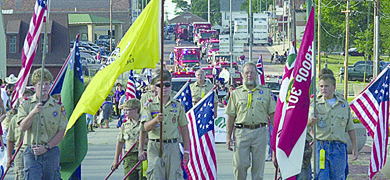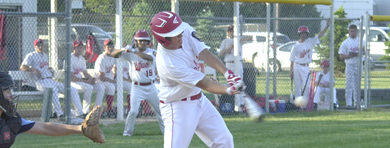“Future of Willard Park” on council’s April agenda
By Nancy McGill
Hebron Journal-Register
hebronjrnews@windstream.net
In its March meeting, the Hebron City Council briefly discussed the “Sale of Willard Park.” The topic will again be on the council’s April 3 agenda, but renamed, “The Future of Willard Park,” according to city adminstrator, Chris Fangmeier.
“There are a lot of people jumping to conclusions. The council has no motivation to bypass the public,” Fangmeier said.
Councilman Doug Huber introduced the idea of a sale to encourage public input.
“We have some things coming up in the near future. The people of the city are going to have to decide where this funding is coming from,” Huber said.
In a letter to the editor this week, Huber highlights the 2015 price of maintenance to Hebron’s three parks, Willard, Roosevelt and Riverside — all three amount to $30,682. Willard’s slice is an estimated $10,000 to $12,000 per year for mowing, tree trimming and general upkeep.
Huber’s focus centers on the swimming pool, which is over 80 years old. In observing other communities, he estimates a new facility will cost closer to $1 million.
“This is going to be a major issue for our city in probably less than five years,” Huber states in his letter.
“The people who gave us the park said we need to take care of it. It isn’t taken care of the way it should be,” Huber said.
Willard Park was donated to the city by Charles Willard’s widow, Anna Willard. Willard was at one time a Nebraska State Treasurer. The city agreed to the deed’s terms — it would “plant shade and ornamental trees and other wise beautify and improve…for the use of the Public on or three years” from the date, Jan. 9, 1902.
Hebron resident, David Cording explained the deed and the city’s agreement in a letter to the editor published March 15.
The deed states if the city decides to abandon the park, the land will be returned to the “legal heirs of Solomon Willard late of Boston, Massachusetts, deceased.”
“He was already gone in 1902,” Cording said. “I believe the city of Hebron would have to spend the money on private detectives to find the heirs of Solomon Willard.”
Interestingly, an entry of the Freemasons: Grand Lodge of Nebraska, also cites Charles Willard via his widow.
Anna Willard approached the Grand Lodge and offered to sell her property “near Hebron” for an Orphans Home.
“That while the Grand Lodge should express its thanks to Mrs. Willard for her kind and liberal offer, yet on account of want of the necessary funds in our treasury to purchase the property, your committee is of the opinion that this proposition should be refused,” the entry reads.
Cording said there is no statute of limitations on the deed’s requirements and the city is bound to its obligations on the park forever.
At March’s meeting, Huber said the public used to frequent the park.
“My sister, Sharon, has home movies of the park,” Cording said of the picnics attended by the Grace Lutheran Church congregation.
He chuckled as he recalled the day three church congregations gathered at the park in the 1970’s.
“We should have coordinated it better with one church bringing the dessert and another church bringing something else. The park was full,” he said.
Before he died, Willard platted the park “Park Place.”
“It never really flew,” Cording said. “It wasn’t developed.”
Willard’s Mansion was later sold to the Ohio Joint Synod for the Hebron Academy. The academy opened in 1911.
“It was a high school and as the kids moved through, two years of college was added,” Cording said.
The mansion became Buehring Hall, originally a men’s dormitory that also housed the chapel. Paul Buehring was the president of the college and the first pastor at Grace Lutheran Church.
A junior college was started in 1924 and closed in approximately 1943.
“The males and faculty were drafted,” Cording said.
He said the academy struggled financially because of the Great Depression.
Cording said it was unfortunate Hebron didn’t open the academy after the war because Fairbury’s Junior College opened in 1947 and soaked up the Government Issued G.I. Bill funds.
Women were later housed in Thedora Hall in what would become the county hospital.
The building was eventually torn down and some of the materials went to Grace Lutheran.
Cording said there are photographs of women cleaning the building’s bricks hanging in the church’s fellowship hall. The church’s light fixtures are made from the building’s oak woodwork.
Blue Valley Lutheran Homes Society was organized in the late 1940’s, Cording said.
He added there was a tunnel from the house to the hospital,which was converted from yet another hall, Luther, to a nursing home after the 1953 tornado.
Hebron was on the hunt for a community center, but the building had aging issues and couldn’t be used again.
Jim Kenner doesn’t think the city can sell the park, either.
“It has to go back to the heirs,” Kenner said. “I don’t think the city can sell it if they want to.”


